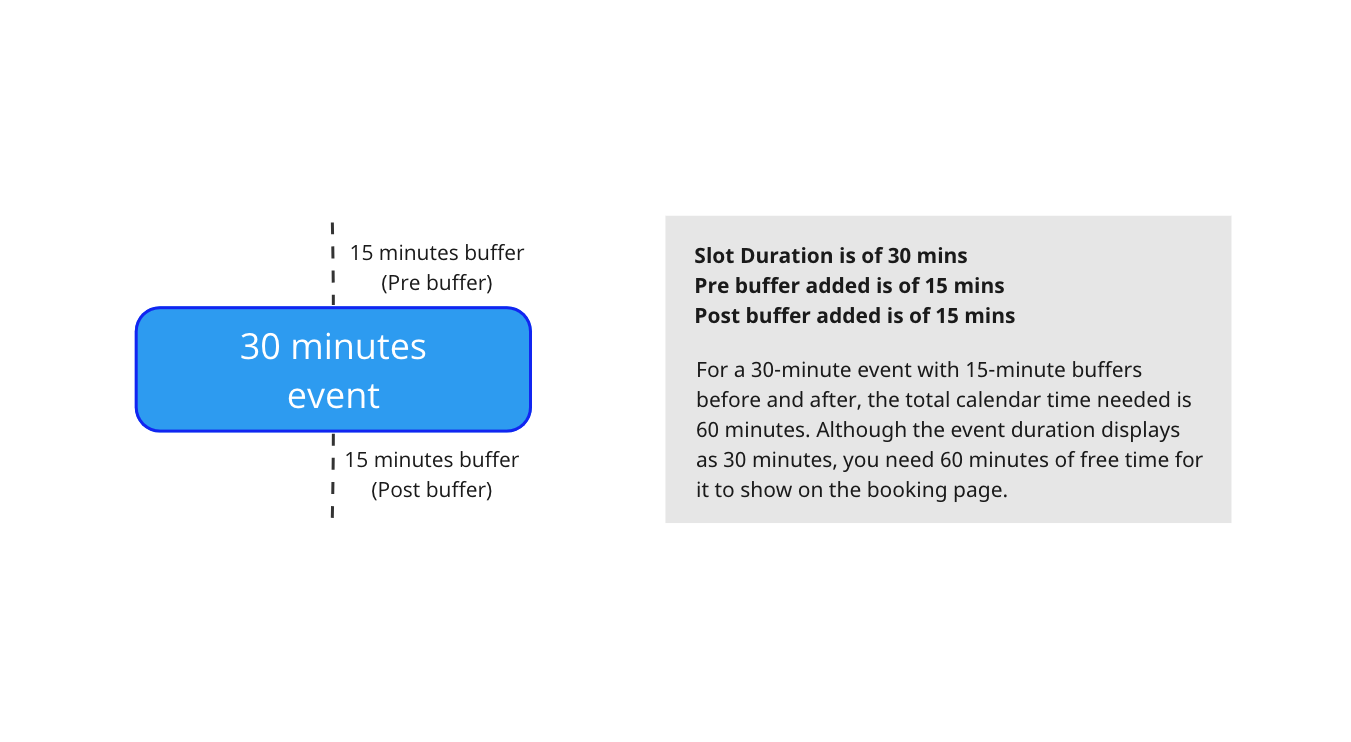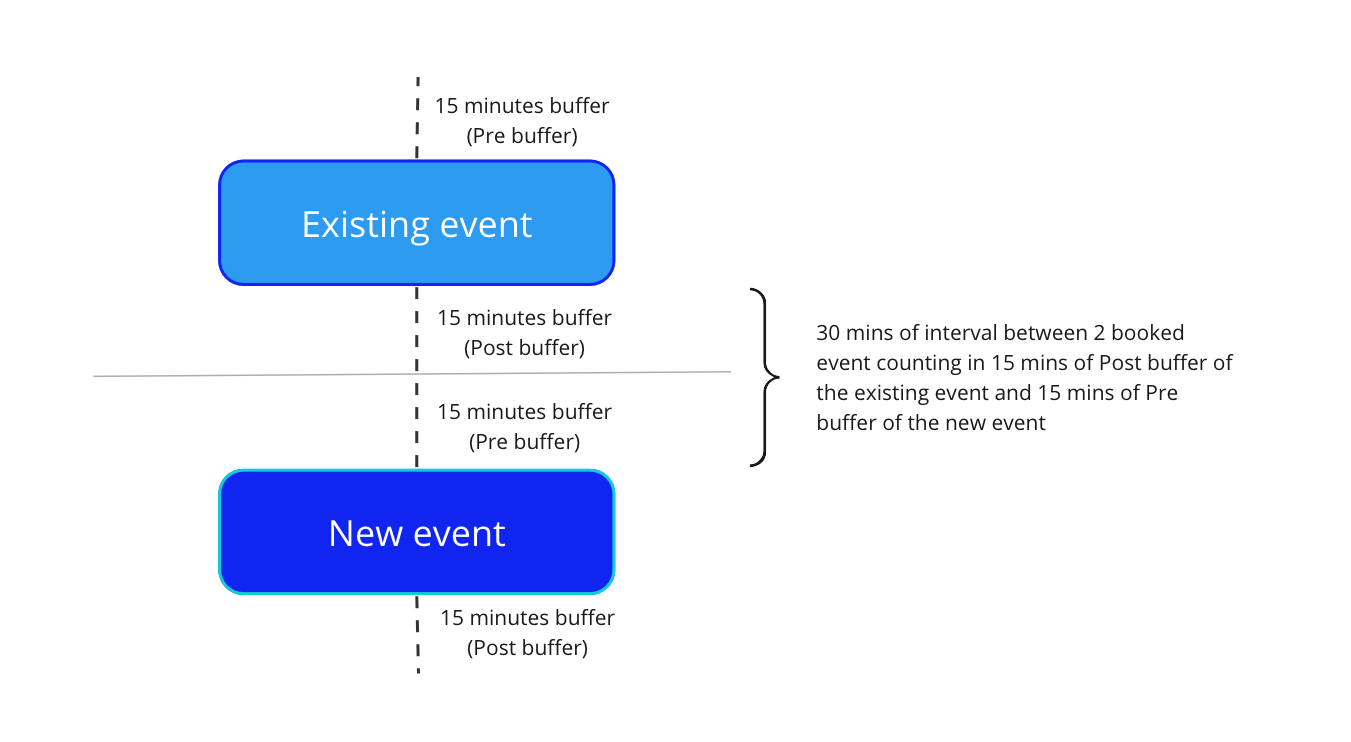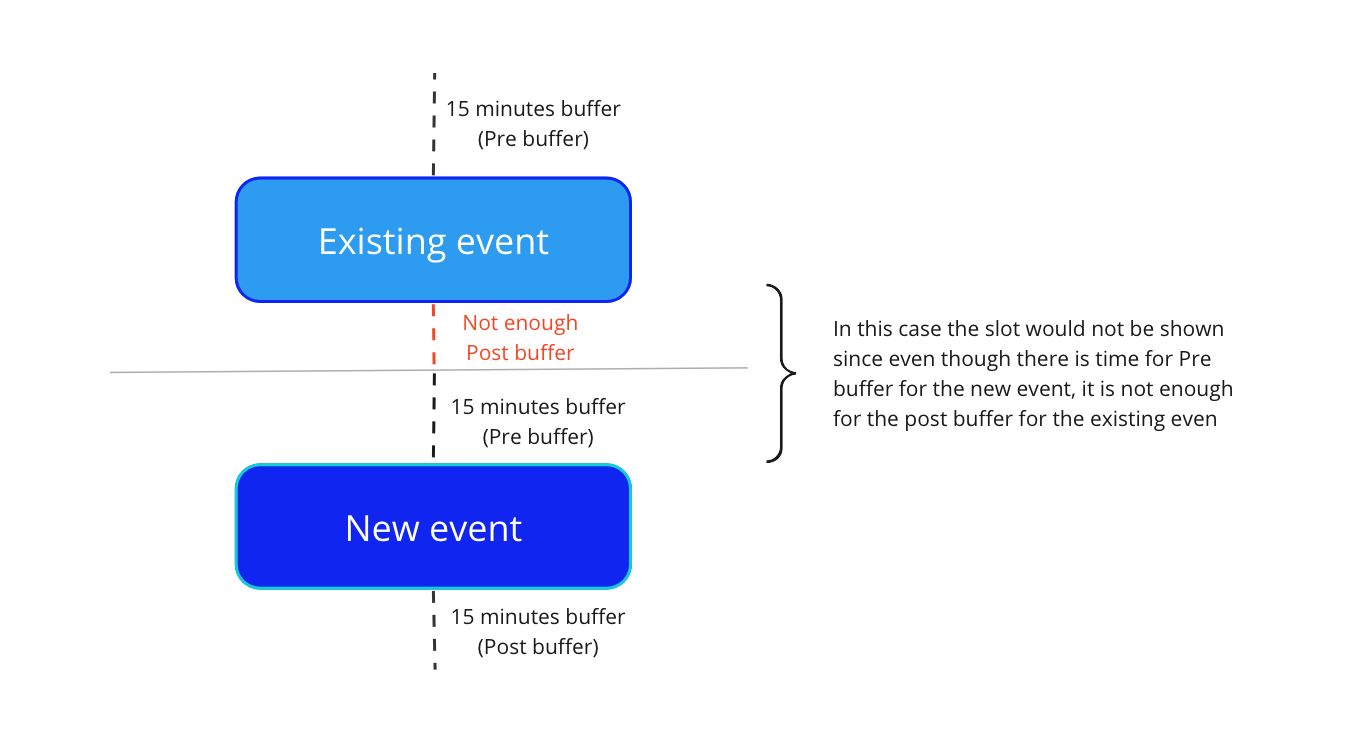Buffers are additional time that can be added before and/or after an appointment. By allowing adequate time between tasks, you can ensure smoother transitions and maintain a steady workflow. Buffer settings are customized for each event type, allowing you to fine-tune and optimize them as needed.
Here's how to add buffers to your appointments:
Choose the calendar to which you want to add buffers for appointments.
If you're creating a new calendar, go to "Advanced Settings." If you're working with an existing calendar, click on "Edit."
Navigate to the "Availability" section.
Look for the options labeled "Pre buffer time" and "Post buffer time"
Specify the duration you want for both the pre and post buffers.
Don't forget to save your settings.
These buffers will ensure you have the extra time you need before and after your appointments.

Choose the calendar for which you would want to turn off the buffers and click on edit
Go to "Availability" and scroll down to the page where you see "Pre and Post buffer"
Make the values as "0"
Don't forget to save your settings
This will ensure that going forward any appointment which gets booked on that calendar would not have any buffers
Buffers are exclusively for appointments scheduled via the app. Therefore, any event created directly within the app will have buffers applied. However, events or blocked slots synced from external calendars like Google, Outlook, or iCloud will not have buffers.

Using the example above, if there's a 30-minute event with 15-minute buffers before and after, another person booking on the same day will find an available slot 30 minutes following the existing appointment.

It's important to note that when using both Pre and Post buffers, there are instances where seemingly large free periods in the calendar cannot be booked. This is due to double buffering, where both before and after buffers are applied, resulting in the removal of significant time slots from the scheduling page.
A new event cannot be scheduled if it does not match the buffer criteria for that appointment slot as well as the previous booked slot.

In a round-robin calendar event, individual buffer settings on a user's other calendars can result in an uneven distribution of appointments.
In a collective calendar event, an individual's buffer settings on their other calendars can block available slots that might otherwise appear free, as the buffer time occupies those slots.
A: Buffers are applicable solely to appointments booked through the app. However, there is an exception: if your two-way sync or smart sync feature is enabled (where the system converts third-party calendar events into appointments instead of treating them as blocked slots), buffers would be applied in such scenarios.
A: Buffers affect available time slots. For example, if a 30-minute event has 15-minute pre and post buffers, the next appointment will be scheduled 30 minutes after the existing booking. Double buffers can limit seemingly free periods in the calendar, removing significant time slots. To maximize bookable time slots, consider using a single buffer (either pre or post).
A: Once a buffer is set for a booked appointment, it can be removed or altered. Buffers are applied based on the latest settings.
A: In a round-robin calendar event, varying buffer settings on an individual's other calendars can result in an uneven distribution of appointments among users.
A: Yes, in a collective calendar event, buffer settings on an individual's other calendars can block available slots that may otherwise appear free due to buffer time occupying those slots.
A: Double buffering refers to the use of both pre-buffer and post-buffer times before and after an event or appointment. It means that extra time is added both before and after an event, effectively extending the duration of the buffer. This can result in time slots that appear to be free on the calendar but are not available for booking because the double buffering occupies those time slots. Double buffering reduces the number of bookable appointments within a given timeframe.